Exhibition
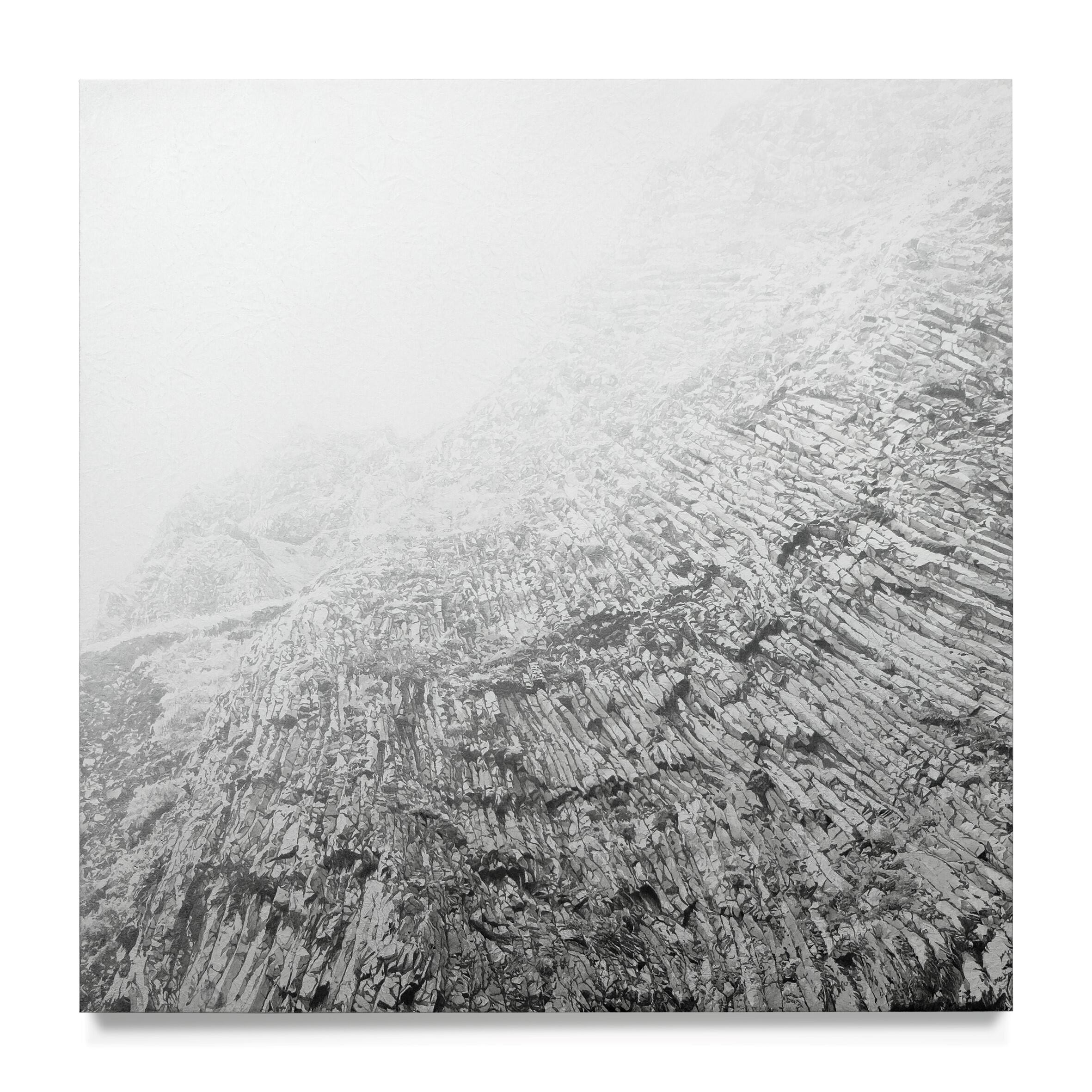
Akira Kugimachi :From the Land of Men
Feb. 2 (Fri) , 2024 - Feb. 25 (Sun)/ROOM1 extended through March 10.
After spending his childhood in Belgium, MFA at Tama Art University and studying media art and philosophy, which forms the basis of his work, at the University of Paris VIII, he has concentrated on his creative activities. Using Japanese paper and natural mineral pigments, Kugimachi depicts landscapes based on the concept of 'light, time and distance', and showcasing his current location at this exhibit in a selection of two-dimensional works and videos.
《From the Land of Men》©Akira Kugimachi, Collaboration With HANNA
| Date | Feb. 2 (Fri) , 2024 - Feb. 25 (Sun)/ROOM1 extended through March 10. |
|---|---|
| Hours | Wed. - Fri. 12:00 - 19:00 / Sat. Sun. and Feb.23 11:00 - 17:00 |
| closed on | Mondays and Tuesdays |
| Reception and artist talk | 2024年2月2日(金)18:30 - 20:30 / スペシャルトークイベント 19:00-20:00 山下裕二(美術史家・明治学院大学教授)x 釘町彰 ※定員に達した為、受付を終了させて頂きました。ウェイティングリストにご希望の方は、tsuboi@artfront.co.jpまでご連絡お願いいたします。 |
| In Resonance at | Yebisu International Festival for Art 2024 Feb. 2 (Fri) 2024 - Feb. 18 (Sun) |
| artist at the gallery | 2/2(Fri), 3(Sat)14-17h, 4(Sun)15-17h, 11(Sun)14-17h |
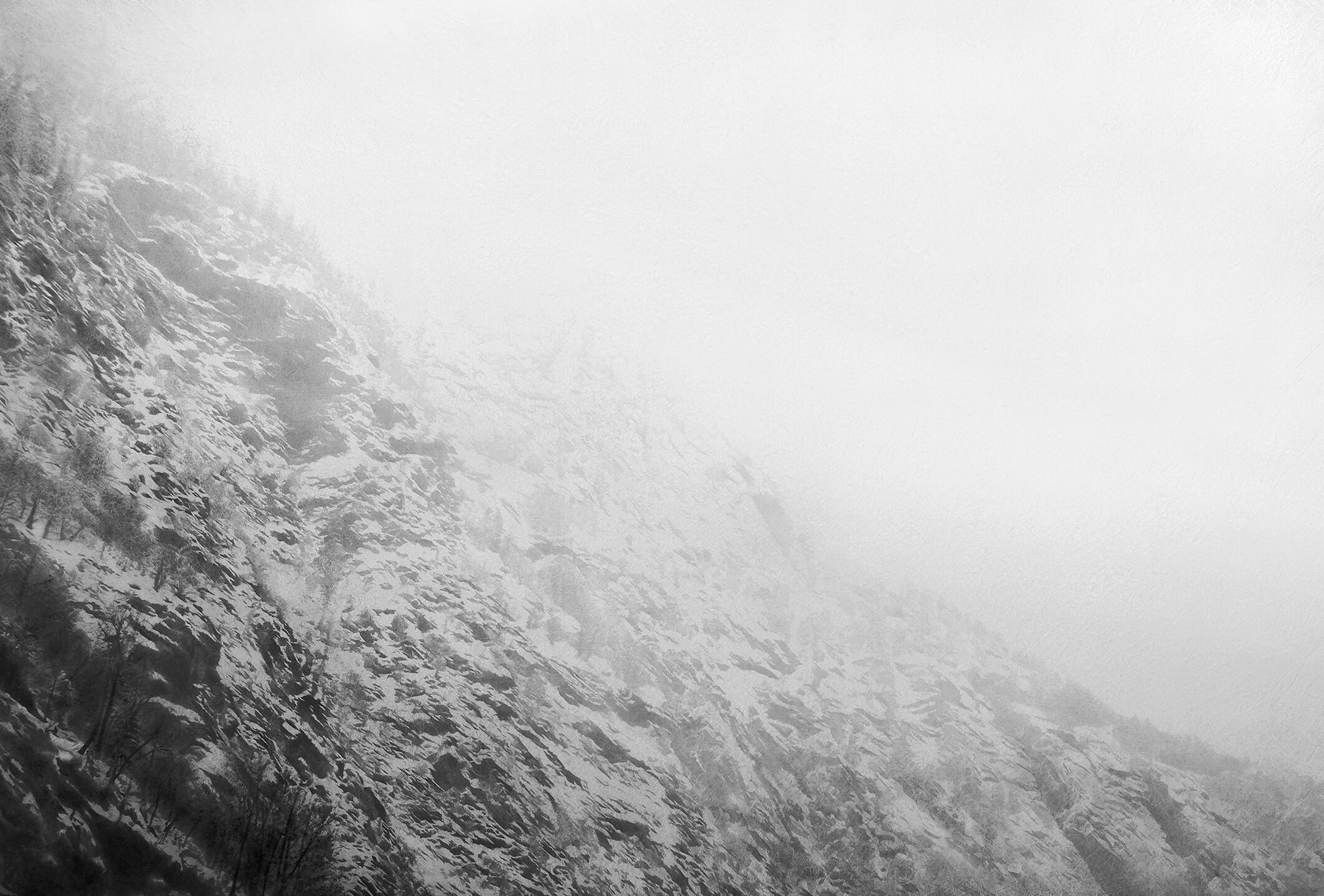
《Air (Gabi)》2022 Japanese hemp paper, sumi ink, shell powder, natural mineral pigments 1973x2910mm photo by Haruna Maeda
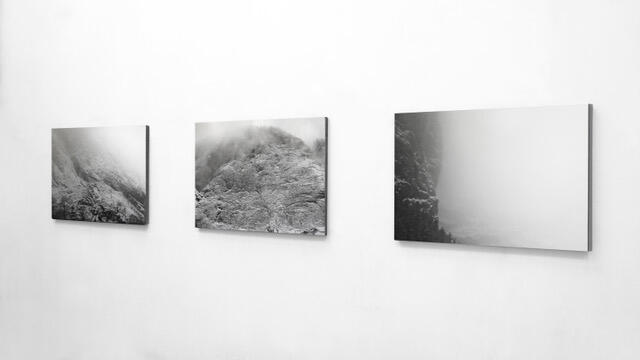
《Air #1-3》(triptyque) 2022-2023 Japanese hemp paper, sumi ink, shell powder, natural mineral pigments 652 x 919mm each
During the production process, he says he spends 90% of his time on the groundwork. He first applies ink to the rubbed Japanese paper and then applies several thin layers of light with gofun (gofun) on top of it. As a result, the white of the ground is not just white, but also opaque, with a mysterious depth as a background and a feeling of air between eternity and the moment. The more motifs are painted on top using rock paints, the more reality is lost.
Taking this as a counterpoint, he began to think of the paint as a silhouette and wanted to create paintings in which there is no object or absence of an object, setting out to try to connect the flowing images with the so-called 'aesthetics of withdrawal' of the paintings made with rock paints, and this led to this installation of images and flat surfaces.

《Air #2》(triptyque) 2023 Japanese hemp paper, sumi ink, shell powder, natural mineral pigments 652 x 919mm
Kugimachi studied media art at the University of Paris VIII and says that as a student he studied video art and interactive art by Bill Viola, and was also influenced by French philosophers Levi-Strauss and Gilles Deleuze, as well as the Zen philosophy of D.T. Suzuki. Whether it is video or painting, his work is consistent in that "the work is always a process, and both the creator and the viewer are always in a situation of process". In this exhibition, video images projected on multiple screens and large, recent paintings will intersect along various time lines to transmit something behind the images, or the absence of that 'something'.
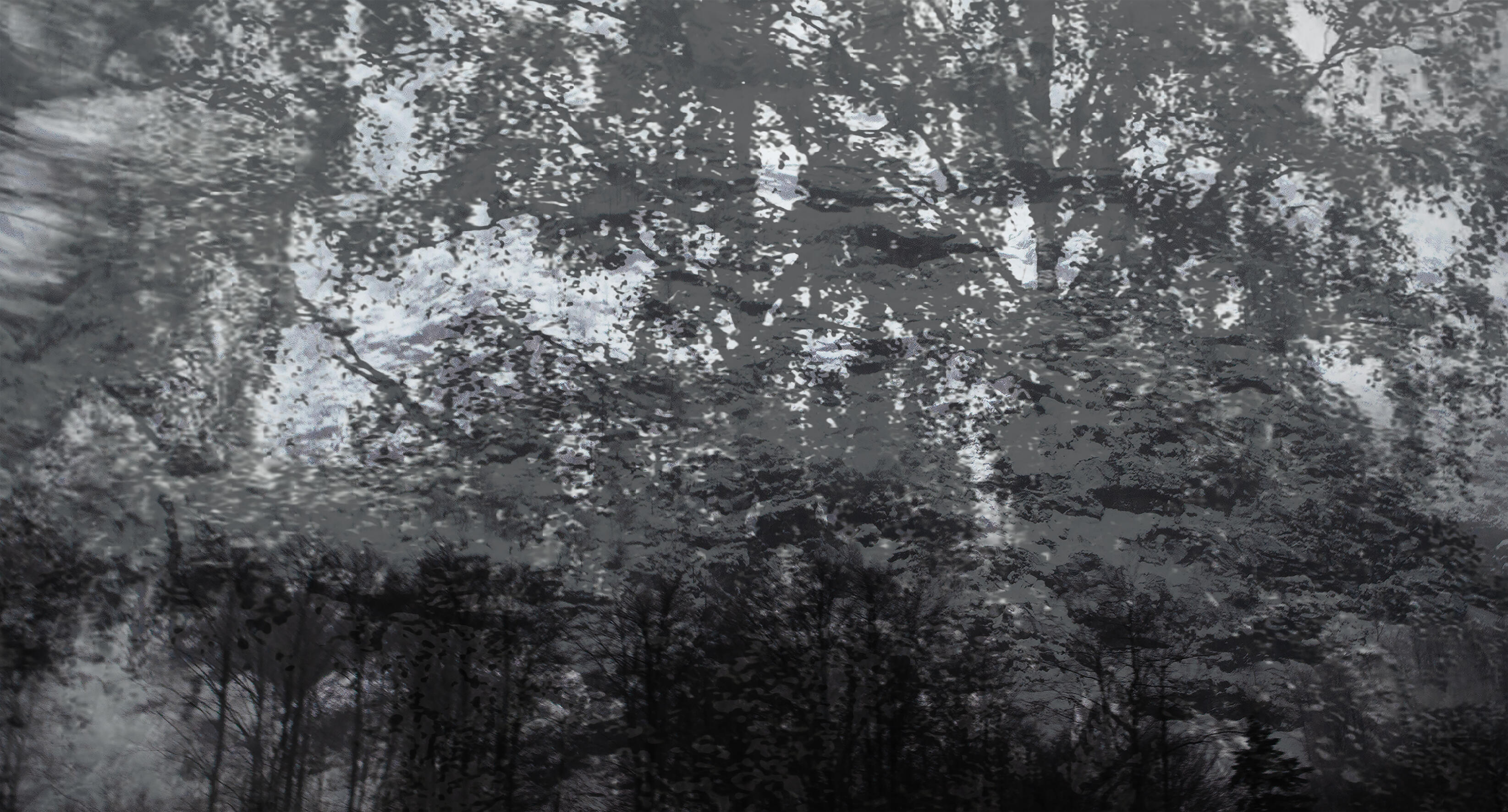
《From the Land of Men》 2023 (11min11sec) Ver Double screen / HEVC Video 4K UHD on 《Air (Shein) 》2023 2357x3600x45mm Sumi ink, shell powder and natural mineral pigments on Japanese hemp paper (video projection on two dimensional work)
Being Dative case: the World of Akira Kugimachi
Takeshi Nakajima [Political Scientist, Professor at Institute for Liberal Arts, Tokyo Institute of Technology]
What most hinders the creation of beauty is an over-determined attempt to make it. The more you strive for beauty the more it will elude you. To capture it, you must cast aside all intentionality.
I have never had the chance to meet Akira Kugimachi, nor have I directly seen many of his works, but the first time I saw one, I knew at once that his consciousness was directed towards movement beyond intention and determination.
Kugimachi seeks to draw what all action leaves unattainable. He aims for existences that cannot be seized by a self – by an ‘I’. To find what he seeks, he goes beyond ‘I’, surmounting intention, and taking his chances.
I studied Hindi, which has a dative case. For example, to say, ‘I am happy’, you say ‘happiness comes to me and stays there’. To say ‘I love you’, you say ‘love of you comes to me and stays there’. For ‘I understand Hindi’, you say ‘Hindi comes to me and stays there.’ Such is the grammatical pattern.
I once gave this matter some thought. If happiness, love, or language come to me and stay there, where do they come from?
Indians regard origins as lying with the gods. ‘I’ is no more than a vessel accommodating things from gods. It is not the case that ‘I’ do things with my own abilities. Rather, I accept what comes to me, achieving by the promptings of another power. The nominative case is an illusion. It is not possible for ‘I’ to control ‘I’.
Kugimachi is what might be called a ‘dative case’ painter. It might be that painting is something that comes to him, not something his nominative-case selfhood controls. Forms crystalize in his work beyond the dimension in which ‘I’ is able to paint.
Perhaps for this reason, Kugimachi likes to capture light. Light renders matter visible. But light does not need light, and it is impossible for us to see light itself. The presence of light is detected only by the existence of shadows.
Humanity is limited, and we cannot depict the infinities of light. Light is rendered by not being drawn. A painting by Kugimachi closes in on this uncapturability, inviting viewers into the source of light.
In front of Kugimachi’s work, you don’t so much use your eyes, as use your gaze. You view, you do not look. Such is Kugimachi’s work.

《Air Gen-bin》2022 Japanese hemp paper, sumi ink, natural mineral pigments, 1940x740mm collection of Cernuschi Museum (Paris)
Akira KUGIMACHI
■Biography
1968 Born in Yokohama, Japan
1995 MFA in Fine Arts, Japanese Painting Departement, Tama Art University ,Tokyo,Japan
1995-96 Ecole National Supérieure des Beaux-Arts de Marseille, France
1999 MFA in Media Art and Technology, University of Paris VIII, Saint-Denis, France
■Solo Exhibitions
2020 "Elpis" Gallery Pierre-Yves Caër / Paris (France)
2018 "Erewhon" Gallery Art Composition / Tokyo
2017 "Re-generation" Nihonbashi Mitsukoshi / Tokyo
■Group Exhibitions
2023 "Dystopia Transition from Memory" / Art Front Gallery (Yebisu Film Festival Cooperation Program) / Tokyo
2023 "Dialogue of Paintings and Ceramics" / Cernuschi Museum / Paris (France)
2022 "Matsumoto Architecture + Art Festival" / Nagano
2022 "The Brilliance of Contemporary Japanese Paintings" / Niimi Art Museum / Okayama (Japan)
2019 "Art Paris19" / Grand Palais / Paris (France)
2018 "Renaissance Contemporaine" / Pierre-Yves Caër Gallery / Paris (France)
2018 "Cabinet Da-end 08" / Galerie Da-end /Paris (France)
2017 "Collect" / SAATCHI Gallery / London (England)
2017 "L'Aurore de Paysage" / Villa88 /Bordeaux (France)
2016 "Paysages Subjectifs" / Lanchervich Muséum / La Louvière (Belgium)
2016 "Encounters" / Gallery DUTKO / London (England)
2015 "Ombre et Lumière"/ Gallery DUTKO Bonaparte / Paris (France)
2015 "Regards croisé sur le Polochon" / Institut National des Métiers d’Art / Paris (France)
2015 "Mode Nippon V & Créateur 80'" / Artcurial / Paris (France)
2013 "Contemporary Sumi-ink Artist Exhibition" / The National Art Center, Tokyo
2012 "A Force de regarder au lieu de voir" / Galerie des Grands Bains Douches de la Plaine / Marseille (France)
2011 "Tragique du Paysage"/ Galerie Eric Mircher /Paris (France)
■Collection & Selected projects
Cernuschi Museum (Paris) / Niimi Art Museum (Okayama , Japan ) / Azabudai Hills AMAN Residence /The Peninsula Tokyo (Tokyo) / Rigenji Temple(Tokyo) / Mitsubishi Corporation (Paris) / Former Residence of Kenzo Takada (Paris) / Nishi Sake Brewery (Kagoshima) / and many others
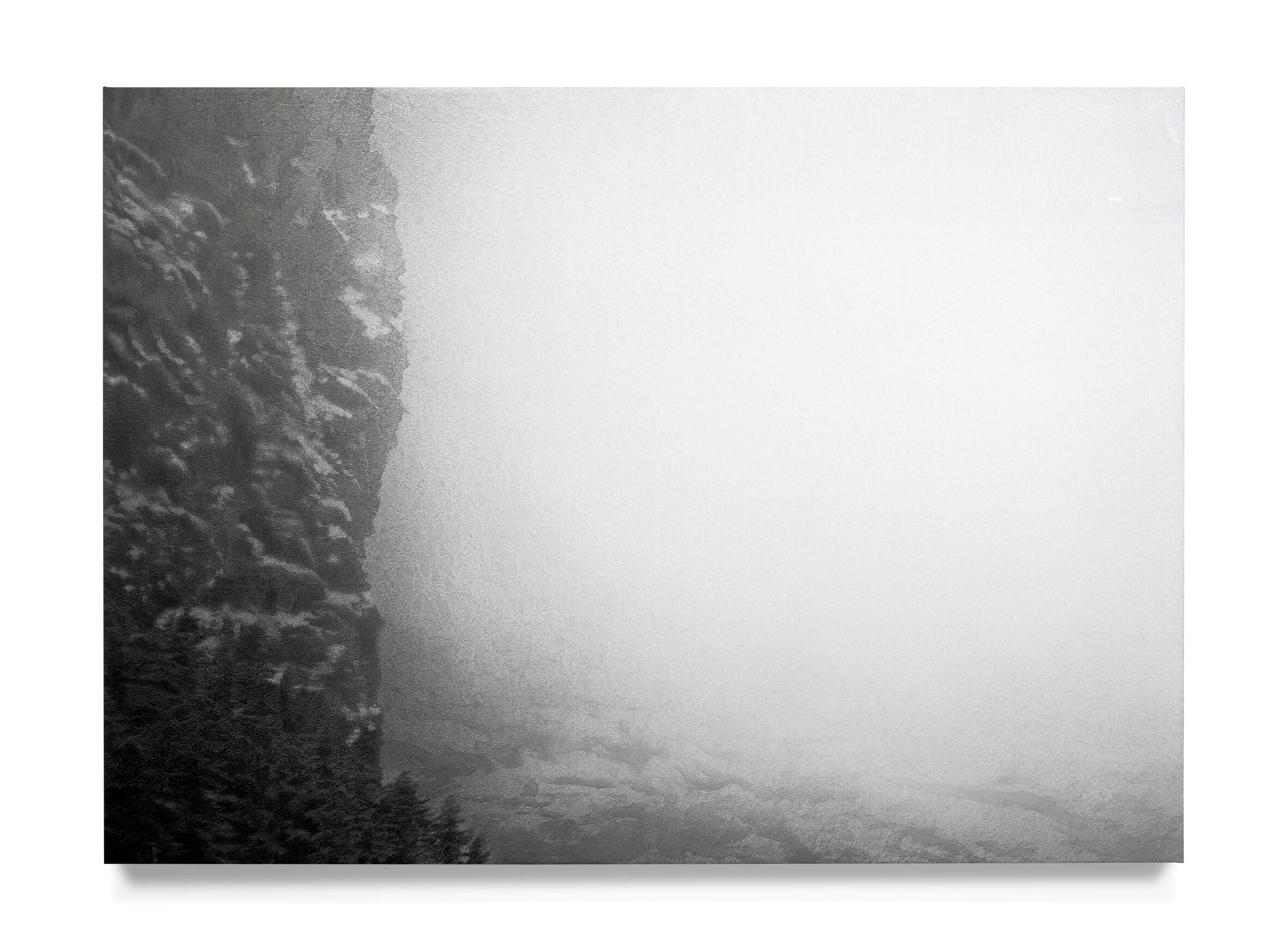
《Air #3》(triptyque) 2023 Japanese hemp paper, sumi ink, shell powder, natural mineral pigments, 652 x 919 x 30mm













